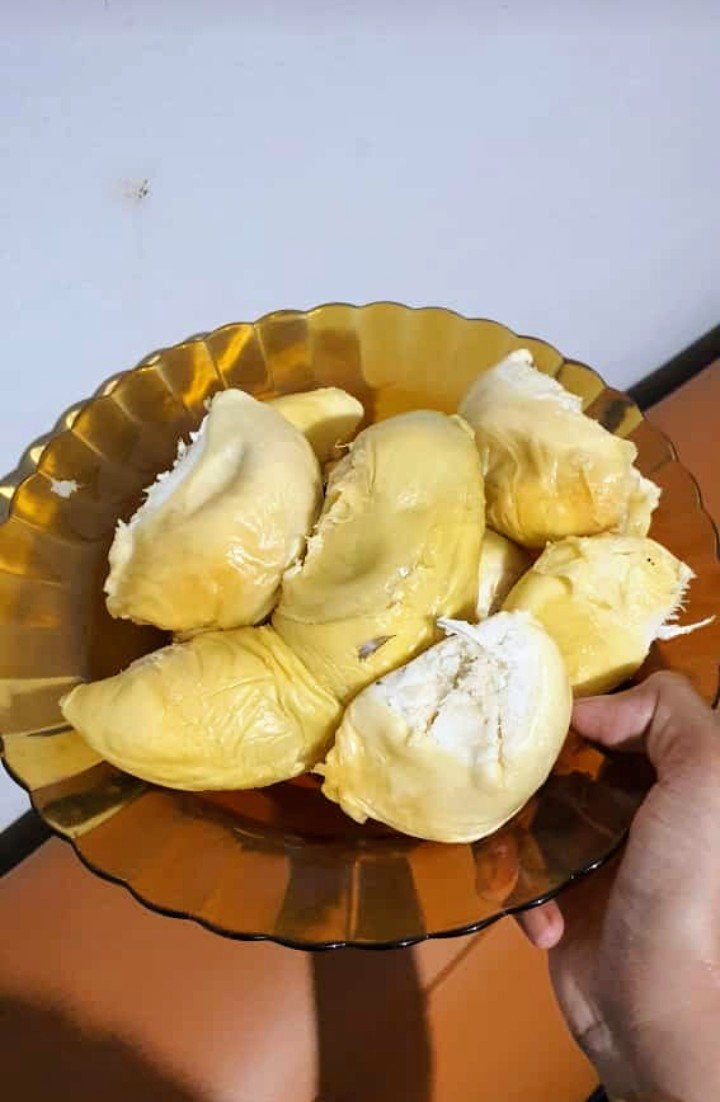Hello my loyal and beloved friends, nature and plant lovers. How are you? I wish you all the best and continued success. It's great to see you again in this post and share about nature. On this occasion I would like to share about the fruit known as the King of Fruit. With a distinctive aroma and features that are not owned by other fruits, so this fruit is nicknamed with that nickname. The name of the fruit is Durian or Durio zibethinus.

The fruit is known to have originated in Southeast Asia. Its history is known from a travel report of European explorers in the 15th century. Masatoshi Iguchi in his book tells about an expedition led by Pieter Scipio van Ostende in 1687. At that time they found many durian trees growing in the Bogor area, West Java, Indonesia.
In addition, someone who describes durian in detail in his research, he is a German-born botanist named Georg Eberhard Rumphius. According to his research in Ambon, Maluku, Indonesia, he found that some people there used the aroma of this fruit to catch weasels. From that moment he recorded the name of the genus Durian as Durio. And from his notes, the name Durian was also included in the botanical khanasah so that it invited the attention of other European botanists. Rumphius' notes spread widely throughout the world's botanists, so that after 33 years, a Swedish botanist named Carl Linnaeus included the Latin name of this fruit as Durio zibethinus. The planting of zibethinus on the back, not without reason, it was inspired by the story of how Rumphius first discovered this fruit where the Ambon people used the aroma of this fruit to catch weasels. Eventually the Musang's Latin name (zibetto) became the fruit's Latin name, zibethinus. This is to commemorate the story of Rumphius' findings while in Ambon.

A different story from a British naturalist named Alfred Russel Wallace who had conducted research around 1848 to 1854 in the Ternate region, Indonesia. At the time of his research he was interested in this fruit so he wrote a letter to his fellow botanist named Sir William Jackson Hooker. Wallace said in his writing "The aroma of ripe fruit is not necessarily pleasant, although it is not so pungent smelling once the new fruit falls from the tree. The only way to eat a perfectly ripe durian is when it falls."
"It may not be true to say that durian is the best of all fruits, especially as it is not juicy and refreshingly sour like oranges, grapes, mangoes and mangosteens. But as a food, durian's deliciousness is unrivaled. If I had to make two things that represent perfection, then I would crown Durian and Orange as the king and queen of fruits."
Early records of the archipelago consuming this fruit are evident from the reliefs on the stone walls of Borobudur temple. The reliefs show carvings featuring durian fruit that is used as an offering to the king, traded, as well as people carrying it along with other fruits such as mango and mangosteen. In fact, the relief of a fruiting durian tree is in one frame with 11 royal women which implies the importance of durian at that time. So it can be concluded that the people of the archipelago have consumed this fruit since 1300 years ago.
That's a little about the history of the fruit nicknamed King of Fruit. Hope it's useful and you like it. I say goodbye, hopefully we can meet next time. Thank you for everything. Greetings from nature lovers.